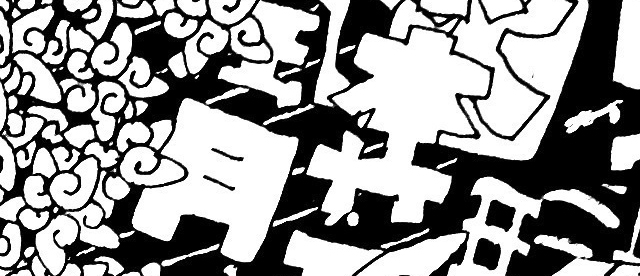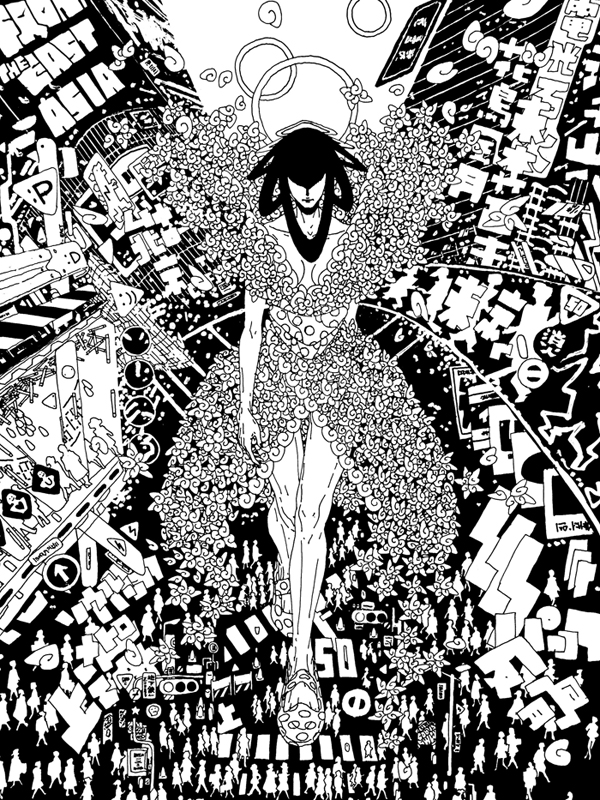
Take a look at the illustration below. What you see is a woman walking in a flower-made kimono on the busy street of Tokyo – what really embodies it though is the rising power in the nations of the “Far East”. The ever increasing economic and social power in countries like China and South Korea are starting to take shape in the form of art. In the past, any sort of fashion statement made by the Asian fashion industry has been scoffed at and criticized by the fashion elite. However, the recent crop of Asian fashion designers and models has caught the attention of the Vogues and fashion buyers around the world. Are the changing tides in Asian fashion just a coincidence? I think not. Fashion has always been indicative of the nuances of a nation or people and today’s fashion industry is receptive to the social and economic capabilities in Asia.
If you flip open the pages of Vogue or Harper’s Bazaar, what you might spot is a model draped in a $10,000 Balenciaga top with $20 DKNY jeans. These blends of clothing articles signify the emergence of street style in fashion publications. One of the biggest influences of street fashion in mainstream magazines is from the mecca of the democratization of fashion; Tokyo, Japan. Street style arose from the alleys of Tokyo during the 1960’s because of its bustling youth culture. It was during this time of Japan’s economic glory that their influence in global trends began to take a foothold. Throughout the 80’s and 90’s, more and more magazines caught wind of Japan’s street fashion wave and featured the genre on their pages. Does anyone remember the groundbreaking 1988 Vogue cover featuring model Michaela Bercu? It was the first time that American Vogue, the most influential fashion magazine in the world, featured street fashion on their cover. The presence of Asian culture in fashion didn’t stop there; street fashion was also propelled by the popularity of Asian youth culture. A variety of subcultures in Asian youth; such as lolitas, K-Pop, J-Rock and Asian dance crews were popular images throughout the world. Because of the rising social status of Asian countries, their young citizens were embodying a presence of privilege and were adapting the sociology of cool. Fashion editors picked up on these slight nuances of sociology and propelled these styles in fashion magazines. Fast forward to the year 2012, you can find the influences of Asian street fashion in all of the major fashion magazines. What started as a trend in Japan’s youth culture became a huge presence in the fashion world. From this example, you can see that global fashion trends reflect the rise of Asia and the dominance of its youth culture.
In the late years of the new millennium, something happened in the runways of Paris that shocked even the best fashion experts. From Givenchy, to Chanel, to Dior, shows were suddenly packed with fashion models from Asia. In the fashion world, Asians have traditionally been the struggling minority that couldn’t manage to win over the industry. However in 2011, an entire generation of Asian superstars surged the catwalks. Young upstart, Liu Wen, walked a staggering 70 fashion shows during her 2010 season! This fresh trend in the fashion industry eventually trickled down to magazines and advertising. Soon, Chinese models like Sui Hei and Fei Fei Sun were nabbing all of the international Vogue covers. With all of these models on magazine covers, Asian faces became a common site in magazines. Now that the publication world had favored Asian faces, the advertising industry caught on to the trend as well. Models like Shu Pei and Tao Okamoto were landing advertising campaigns for brands like Calvin Klein and Maybelline. The sharp rise in the popularity of Asian fashion models is reminiscent of today’s economic world. We can use China’s recent history as an example of this analogy. Before the new Millennium, China was a stagnant developing country that kept its foreign relations tightly shut. As the new Millennium came by, China opened its borders to the world and showed its incredible economic growth. Within a few short years, China rivaled the great superpowers and gained significant buying power over the international market. Now in 2012, China is second only to the United States in total buying power. From these statistics, it is easy to see why the fashion industry is suddenly pushing Asian models to the forefront. It is important for fashion buyers to please the powerful Chinese economy because they can generate more revenue from them. It is the economic and social status of Asian countries like China that are promoting Asians in the zeitgeist of fashion.
If there’s one thing that reader’s should take from this article, it is that fashion embodies the sociology of cool. Cool is an attitude adapted by people in a privileged position of society. Every season, the fashion industry finds a group of people that is considered privileged and they convince consumers that they are a “cool” crowd. Now that countries in Asia are becoming so powerful, fashion is highlighting them in this moment in history and pushing the image of Asia in the media. When you read fashion magazines and see Asian styles and Asian models, remember that it is due the ascendance of Asian countries.
